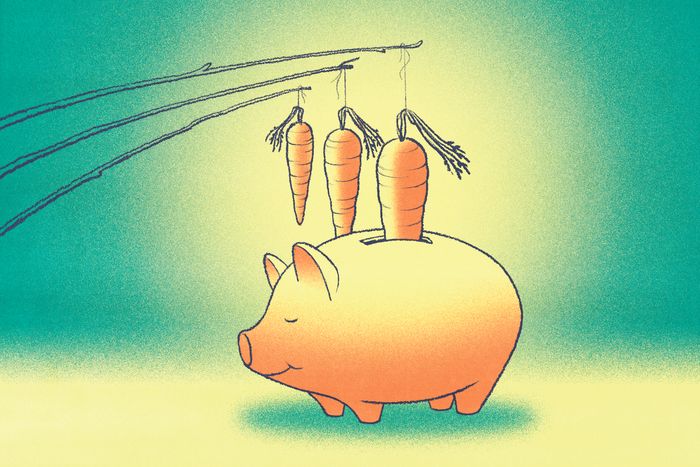Automated retirement-savings accounts—where companies enroll employees and have them start saving at a default rate unless they opt out—have been a huge success.
But they aren’t a cure-all for getting more Americans to save for retirement.
Studies show that auto-savings programs have helped raise participation rates in employer-sponsored retirement accounts, especially among women, minorities and lower-income workers. But a significant number of organizations don’t use this powerful intervention for legal and/or philosophical reasons. They include some private-sector employers who believe workers should decide how much to save on their own, as well as public-sector employers operating in states where auto-saving is prohibited.
To fix that, we need a nudge that makes it easy to save without being perceived as too paternalistic, and that is permitted under all state laws. Here is my proposal: Automate the process of setting up a savings account but not the actual savings part. That is, make it easy to open an account but let people decide on their own when and how much to save.
Why it will work
There are three important behavioral reasons why automating the account-setup process could make a difference, even if the actual savings part is left up to the employee.
First, it makes saving easier. Instead of two hard decisions (should I set up an account and how much should I save?) workers have to make just one—how much should I set aside? Of course, people can choose zero or take no action, which means they will have an account but won’t be saving anything.
When I asked a sample of American workers if they wanted to enroll in a retirement-savings plan, 15% chose not to save. However, when I told people that they already had an account, and asked how much they wanted to save, only 8% chose to save zero. We cut the percentage of those not saving in about half.
Since then, I’ve replicated the results with professors Hal Hershfield at UCLA and Joseph Reiff at the University of Maryland.
Second, when people have to choose a savings rate on their own, they often end up saving more than they would have had their plan had a default rate.
In current auto-savings plans, the default savings rate is sticky. That is, if the default rate is 3%, many people will think that is the right amount, even though it’s usually way too low. Furthermore, inertia means that few people will change their savings rate over time. The end result is that millions of workers aren’t saving enough for retirement.
Research I conducted with Saurabh Bhargava at Carnegie Mellon University, Lynn Conell-Price at the Consumer Financial Protection Bureau and Richard Mason, who was at City, University of London at the time, bears this out. We looked at more than 8,500 workers across hundreds of retirement plans, and found that employees who chose a “personalized” rate of savings saved more on average—7.8%—compared with those who accepted auto-savings default rate—3.4%.
Some might argue that employers could simply pick a higher default rate to start auto-saving, but that raises the issue of enrolling workers who can’t afford to save more, such as a single parent with maxed-out credit cards.
Third, once employees are automatically enrolled in a retirement account, there are opportunities to nudge them to start saving, even if they choose not to at first. As it is now, those workers who opt out of auto-savings plans are essentially written off and never sent reminders that they haven’t begun saving yet.
With auto-accounts, however, we can send these workers vivid reminders that they have a zero balance in their account. And if these reminders are combined with an option that allows people to start saving with a single click, it likely will entice more workers to set money aside for their future. Older research, for example, showed that when people can start saving by simply checking a box on a card, enrollment increases by 10 to 20 percentage points.
A broader use?
My hope is that auto-accounts are a behavioral intervention that everyone can agree on. The nudge makes it easy to set up an account, but ensures that people start saving only if they choose to do so. Furthermore, the cost of opening accounts is negligible. In fact, some retirement-plan providers already set the accounts automatically—they just wait for people to opt in before they let them know that the accounts exist.
Auto-accounts might have other uses, too, such as nudging more people to save for everyday emergencies that could send them spiraling into debt. According to new research, programs that use a combination of auto-enrollment and auto-savings can increase employee participation in emergency-savings accounts funded by payroll deduction, but they also have a high opt-out rate, with nearly half of workers choosing not to save. As such, auto-enrollment alone might be a good alternative to research.
In physics, inertia is defined as “the tendency of objects in motion to stay in motion, and objects at rest to stay at rest.”
Inertia also applies to human nature: The most difficult step is usually the first one. The paperwork is tedious and confusing; we’re worried about trying something new; we don’t know how to start. This is true even when we want to take that step.
Auto-accounts turn inertia into a force for change, while still ensuring workers choose when and how much to save. The nudge does the paperwork for us, so all we have to do is decide if we want to keep going.






